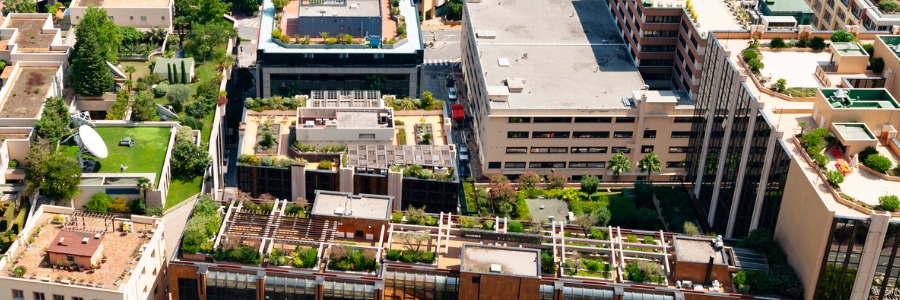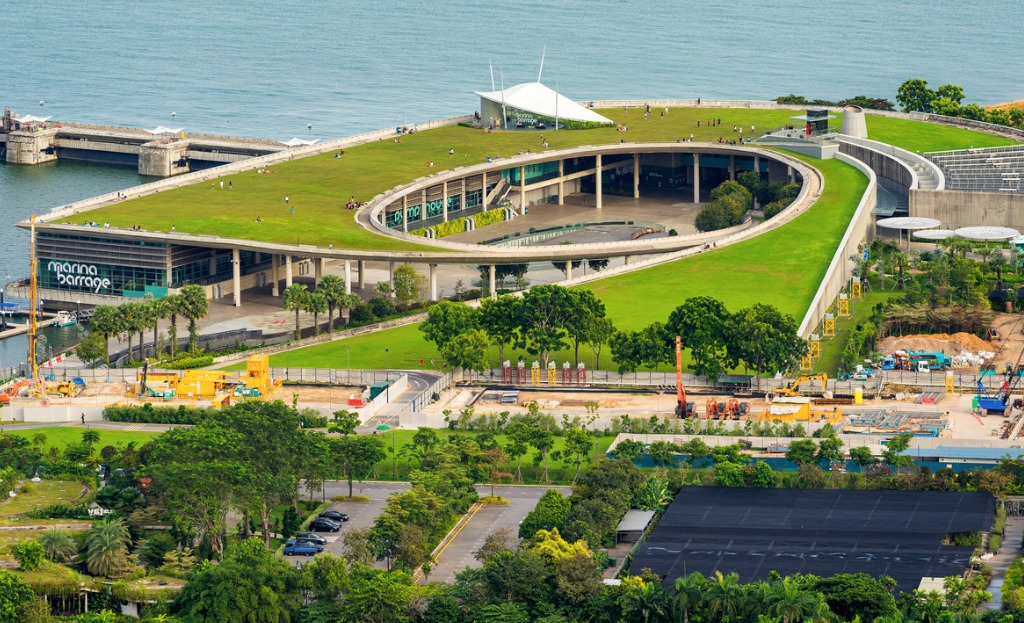
A green roof is basically a vegetative landscape planted over a waterproofed structure. It can be as simple as an esthetically pleasing, planted private space up on the roof, or as expansive as a rooftop plaza on a commercial building, hotel or hospital.
Many Major League Baseball stadiums have also constructed green roofs— from rooftop farms that produce several thousand pounds of fresh produce each season, to extensive rooftop plazas planted with trees and shrubs.
The benefit of planting green roofs is threefold: economic, environmental and social. The most popular benefit driving the green roof market is storm-related due to them being very effective stormwater management tools. Constructing a green roof with the right soil type, and maintaining it with just the right amount of irrigation are extremely important.
“The really important part of soil design and growing medium design is making sure that it’s not going to compact over time,” notes Nate Griswold, Founder and President of Inhabitect, LLC, during webinar Green Roofs 101 (watch below!). Nate has worked at the forefront of the green roof industry for almost 20 years.

It’s important to make sure the growing medium for a green roof has equilibrium. Too much organic material will cause the soil profile to break down and compact over time, affecting drainage as pore spaces in the soil are reduced. The green roof should hold some water for saturation, but it still needs to drain– which is a challenge to overcome with the right type of irrigation.
How much irrigation on a green roof is key. Soil Moisture Sensors embedded in the soil on a living roof can electronically transmit to the smart irrigation controller how much moisture is already in the soil, or how much is needed—so you’re not just irrigating on a timed schedule.
“We’re seeing a demand for soil moisture sensors on the green rooftop to help with real-time data, to make sure that the soil profile is not being flooded full of water, so it can be designed and used as a stormwater management system,” Nate points out.
While rainfall is unpredictable, using the new Precip Sensor elevates the precipitation sensor, utilizing tipping rain bucket technology to measure just how much rain made it into the soil, as well as rain rate, volume and frequency.
Nate compares a green roof’s water holding capacity for stormwater management to a sponge. “If you think of a dry kitchen sponge, you know there’s a lot of water holding potential in that sponge. If that represents your growing medium, you never want the irrigation to make that sponge saturated. So you give it a little bit of water, and you see no drips coming off the bottom of the sponge, because it’s fully held within the sponge. If you leave it out in the sun, it will curl up, and you can’t get water back in it. So you need to understand that, but you also want that sponge to have as much holding capacity as possible when it rains.”

